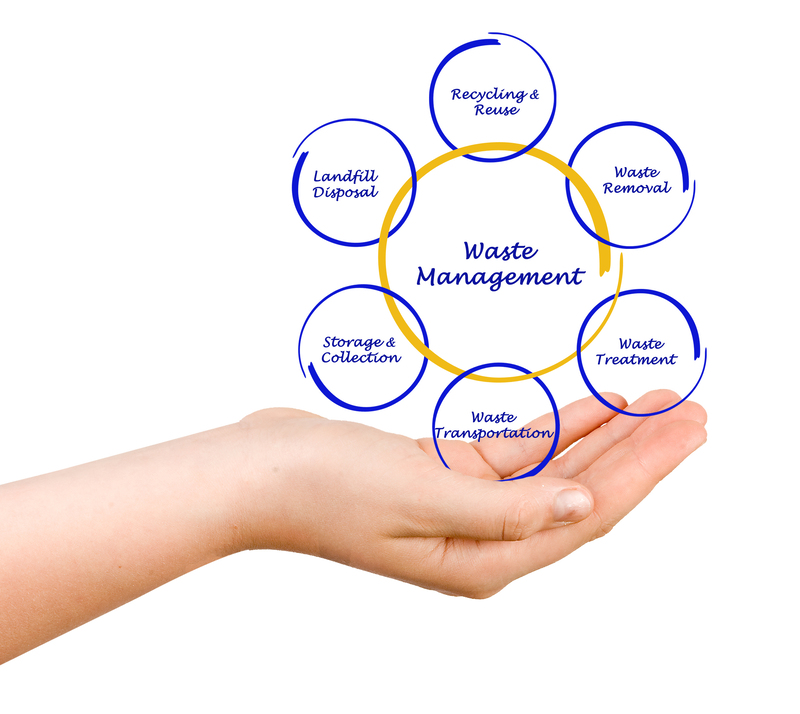Green Alternatives in PPE Waste Disposal Techniques
The COVID-19 pandemic and increasing health risks have spiked the global use of personal protective equipment (PPE) such as masks, gloves, gowns, and face shields. While crucial for safety, this surge in consumption has introduced a significant challenge: PPE waste management. Traditional disposal methods like incineration and landfilling can harm the environment, release toxins, and contribute to pollution. Therefore, exploring eco-friendly alternatives for PPE waste disposal is essential to promote both public health and environmental sustainability.
Why Is Sustainable PPE Waste Disposal Important?
PPE items are predominantly made from plastic-based materials like polypropylene, which are not biodegradable. The conventional processes of burning or burying PPE not only squander potential resources but also pollute ecosystems:
- Landfills are rapidly filling up with discarded masks and gloves, taking centuries to decompose.
- Incineration produces dangerous emissions such as dioxins and furans.
- PPE waste in waterways and natural habitats threatens wildlife and contaminates food chains.
This situation highlights an urgent need for sustainable and green alternatives in PPE waste disposal techniques to minimize environmental damage and move towards a circular economy.

Challenges of Conventional PPE Waste Disposal
The majority of PPE is designed for single use and made of complex plastics. When disposed in large quantities, they pose multiple risks:
- Non-biodegradability: Plastics in PPE can persist for hundreds of years in the environment.
- Microplastics: PPE breakdown results in microplastics that pollute soils and oceans.
- Hazardous emissions: Burning PPE releases toxic gases harmful to both humans and the environment.
- Resource waste: Discarding PPE in landfills wastes valuable materials that could be repurposed or recycled.
Green Alternatives in PPE Waste Disposal Techniques
Innovations and research in green alternatives for PPE disposal are transforming the sector. By adopting sustainable waste management strategies, organizations and governments can significantly reduce the ecological footprint of PPE usage. Below are key eco-friendly alternatives for managing PPE waste:
1. Mechanical and Chemical Recycling of PPE
- Mechanical recycling involves collecting, disinfecting, shredding, and remolding PPE plastics into new products. Technology advancements are enabling the transformation of used masks and gowns into products such as construction materials and furniture.
- Chemical recycling breaks down plastics at a molecular level, converting them into fuels or raw materials for new polymers. This process can handle mixed or contaminated waste streams common in PPE disposal.
Advantages:
- *Potential to recover valuable materials.*
- *Reduces dependency on virgin plastic manufacturing.*
- *Promotes circular resource usage.*
Challenges:
- *Recycling facilities must manage contaminated PPE safely.*
- *Sorting and collection logistics need improvement.*
2. Biodegradable and Compostable PPE
*Developing and utilizing PPE made from biopolymers and natural fibers provides a sustainable solution.* These alternative materials are engineered to degrade safely in the environment, hence minimizing long-term pollution.
- Biodegradable masks made from materials like polylactic acid (PLA) or bamboo fibers decompose under compost conditions within months.
- Compostable gloves and gowns created using plant-based polymers can be processed in industrial composting facilities.
Advantages:
- *Significant reduction in plastic waste accumulation.*
- *Safe for wildlife and ecosystems.*
- *Potential to integrate into community composting programs.*
Challenges:
- *Higher production costs compared to traditional PPE.*
- *Composting infrastructure must exist to realize benefits.*
3. PPE Sterilization and Reuse Programs
Adopting protocols to safely sterilize and reuse PPE can significantly reduce waste generation. Several methods are being employed in healthcare and industrial settings:
- UV-C Light Sterilization: Disinfects PPE using ultraviolet light, allowing for multiple safe reuses.
- Hydrogen Peroxide Vapor: Effectively decontaminates masks and shields for a limited number of reuse cycles.
- Autoclaving: Uses steam and pressure to sterilize some types of PPE, particularly in controlled settings.
Advantages:
- *Significant reduction in the volume of single-use PPE waste.*
- *Decreases overall demand for new PPE manufacturing.*
Challenges:
- *Not all PPE types are suitable for sterilization and reuse.*
- *Protocols must guarantee safety and integrity of reused equipment.*
4. Waste-to-Energy Conversion
*Harnessing waste-to-energy (WTE) technologies converts PPE waste into usable energy while reducing landfill burden.* Processes like pyrolysis and gasification thermally decompose PPE plastics without oxygen, generating fuels such as syngas, oils, and char, which can be used for power generation or industrial fuel.
Benefits:
- *Reduces landfill waste.*
- *Offset fossil fuel use by generating renewable energy.*
Limitations:
- *Initial investment in WTE infrastructure is significant.*
- *Emission control systems are necessary to minimize environmental impact.*
5. Integration of Extended Producer Responsibility (EPR)
Extended Producer Responsibility (EPR) policies place the responsibility of post-consumer PPE waste management on manufacturers. By incentivizing design for recyclability and funding take-back schemes, these initiatives promote eco-friendly solutions to PPE waste.
*EPR programs can mandate collection, recycling, and safe disposal of used PPE, ensuring circularity from production to end-of-life.*
Advantages:
- *Encourages innovation in sustainable PPE design.*
- *Reduces municipal waste management costs and environmental burden.*
Promoting Green PPE Waste Management in Different Sectors
To make a tangible difference, these green PPE disposal techniques must be adopted across various sectors:
Healthcare Settings
- Establishing on-site PPE sterilization and recycling facilities to process waste efficiently.
- Switching to biodegradable PPE where safe and feasible.
Industrial and Commercial Organizations
- Implementing recycling collection points for staff.
- Partnering with certified recyclers specializing in PPE waste.
Education and Public Awareness
- Educating communities on proper PPE disposal methods and benefits of eco-friendly alternatives.
- Promoting the use of reusable and sustainable PPE through public campaigns.
Government and Regulatory Agencies
- Developing policy incentives for sustainable PPE management.
- Mandating green PPE procurement and waste management guidelines for public institutions.
Case Studies and Innovations in Green PPE Disposal
Case Study 1: Recycling of Face Masks in Asia
Countries like Japan and China have initiated large-scale mask recycling programs. In Japan, used masks are collected, sterilized, and reprocessed into construction materials such as pavement blocks and park benches. These projects foster a circular economy and drastically reduce landfill impact.
Case Study 2: Compostable PPE Adoption in Europe
Several hospitals in the EU have transitioned to compostable gowns and masks for non-surgical use. Partnering with industrial composting facilities, they ensure these items are returned to the earth within months, eliminating plastic pollution and enhancing soil health.
Innovation Spotlight: PPE Upcycling Initiatives
- Startups around the globe are developing technologies to transform used PPE into materials for 3D printing, furniture, or even street art installations.
- Non-profit organizations are piloting zero-waste PPE programs in dense urban centers, turning mask waste into new fabrics via advanced chemical processing.

Future Directions and Recommendations
- Research and Development: Investments in biopolymer PPE and advanced recycling technologies are crucial for scalable solutions.
- Policy Support: Governments must create regulatory frameworks to promote compliance and innovation in eco-friendly PPE disposal methods.
- Waste Segregation Systems: Widespread access to PPE-specific disposal bins and collection points will aid in efficient recycling and reduce contamination.
- Public-Private Collaboration: Partnerships between manufacturers, recyclers, and health organizations can drive adoption of sustainable PPE waste management practices.
- Community Involvement: Encouraging individual responsibility and awareness is key to ensuring green alternatives are effective at every level.
Conclusion: Building a Greener Future for PPE Waste Management
As society continues to rely on PPE for protection, integrating sustainable PPE waste disposal techniques becomes a moral and practical imperative. From recycling and upcycling to biodegradable alternatives and extended producer responsibility, the journey towards green PPE waste management is well underway.
Collectively adopting and advancing these green alternatives will not only address the environmental concerns associated with PPE waste, but also foster resilience, safety, and sustainability for future generations.
It is essential that industries, governments, and individuals commit to continuous innovation and adoption of best practices, making eco-friendly alternatives in PPE waste management the standard--not the exception. By doing so, we protect not just ourselves, but also the planet we all share.
Frequently Asked Questions (FAQs)
- What are the best green alternatives for PPE waste disposal?
Mechanical and chemical recycling, biodegradable and compostable PPE, sterilization and reuse programs, waste-to-energy conversion, and Extended Producer Responsibility schemes are leading eco-friendly alternatives. - Is it safe to recycle used PPE?
Yes, with the use of proper sterilization protocols and specialized recycling facilities, most PPE can be safely processed and repurposed. - Are biodegradable PPE products widely available?
Availability is increasing, especially for masks and gowns, but market adoption depends on ongoing research, policy support, and manufacturing capacity. - How can I contribute to sustainable PPE waste management?
Properly segregate used PPE, support recyclable and compostable products, and stay informed about local green disposal programs.
Embracing green alternatives in PPE waste disposal is essential for a healthier planet and a sustainable future.
